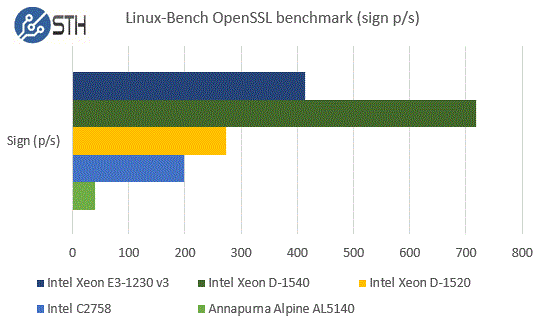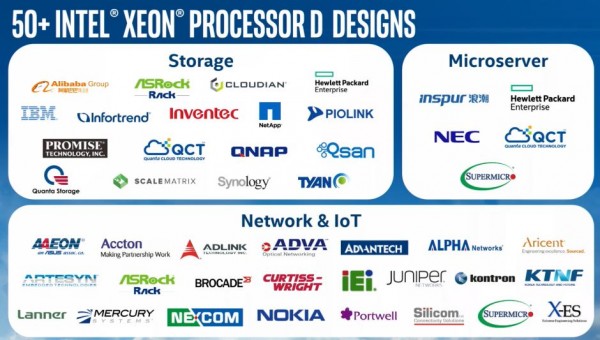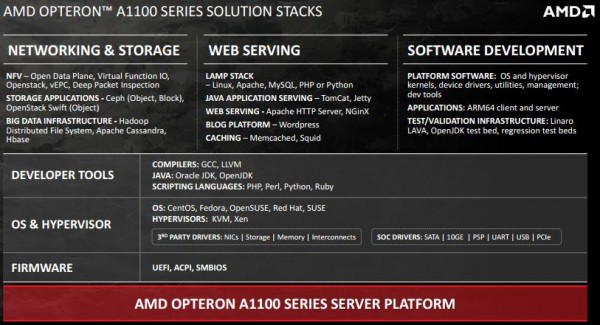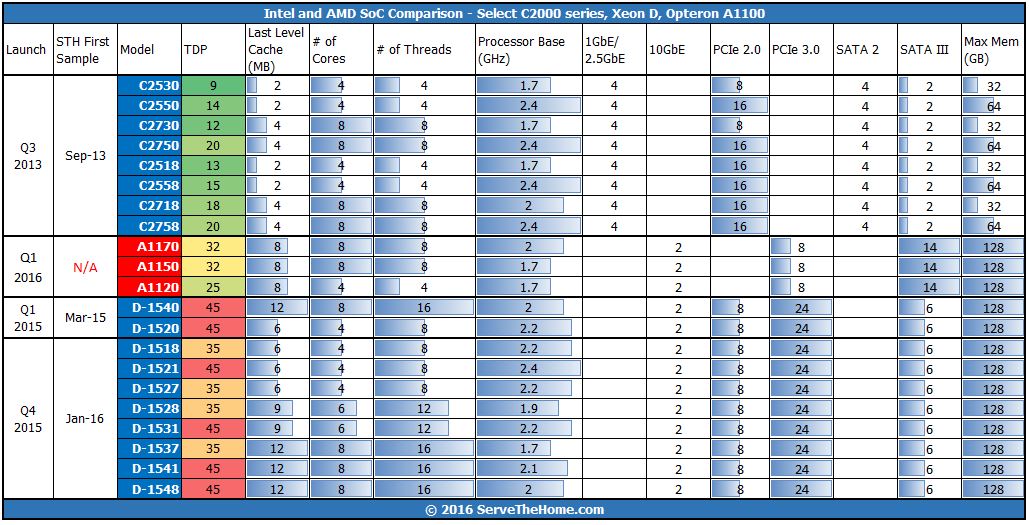Today we ran a news story on the AMD Opteron A1100 “release” as in the chip hit mass production. When we first covered the AMD Opteron A1100 (code named “Seattle”) it looked like AMD would be close behind the Intel Atom C2000 series that launched in and we had first benchmarks of in September 2013. When we first benchmarked Avoton, we knew Intel had a winner. Indeed one can find numerous appliances on the market, from different vendors, with the Intel Atom C2000 family. It was and until is impending Denverton upgrade, will be a very solid platform for low power appliances, especially the Rangeley variant with Quick Assist. AMD’s Seattle certainly scared Intel because the company had a very sharp and potent response: Xeon D. Let us look at why the AMD Opteron A1100 was awe inspiring at the low end in 2013.
Why the AMD Opteron A1100 was amazing in 2013
With eight low power cores and the promise of ARM, we were excited to see the AMD Opteron A1100. AMD promised integrated dual 10GbE whereas Intel was shipping integrated 1GbE/ 2.5GbE. The A1100 was supporting PCIe 3.0 early on and had lots of SATA ports. Suffice to say our initial coverage of AMD we were extremely excited for the chip. Then 2014 was more or less development kits and PowerPoints only. With the AMD Opteron A1100 in mass production now in Q1 2016, we cannot help to think that this looking less than promising.
Here is a quick visualization for you, and feel free to click this for a larger version. What we did was took a sample of the large Atom C2000 family, the Intel Xeon D family, and the AMD Opteron A1100 family and placed them in a table. We took the AMD chips and placed them between Intel’s Q3 2013 chips (Atom C2000 series) and Intel’s Q1 2015 chips. While one may argue that the Xeon D wave 2 parts launched in November 2015 are not readily available, we will have our first 35w 6 core production board within the next week and we have several vendors who have told us additional Xeon D products are inbound in the next few weeks.

As a 2014 product the 8 lanes of PCIe 3.0, 128GB RAM (albeit only 32GB with DDR3 since DDR4 was in short supply in 2014) and integrated 10GbE would have looked amazing. From what we have seen thus far, the ARM Cortex-A57 cores are more of a C2000 (Avoton/ Rangeley) competitor in terms of instructions per clock so this chart is deceiving. We already know that in most cases a 4 core Xeon D-1520 outperforms an 8 core Atom C2000 series at 2.4GHz by a considerable margin. Here is an example from those linked benchmarks with OpenSSL:

In 2016, launching a part with similar TDP but at at the C2758 performance levels (per core) is not going to be the winning formula.
What the market is telling us
AMD has excellent marketing. In fact, they are a company I am a nostalgic supporter of despite the fact I have not used an AMD CPU outside of a test bed since the AMD Opteron 6100 series (launched March 2010). Their GPUs are excellent on the other hand. One of those two reasons is likely the reason that this launch gets much more press than a Cavium or Applied Mirco ARM launch. Nevertheless, I was nothing short of shocked when I saw the hardware partner list:

Given, I do not know exactly the size of these companies, but here is the November 2015 Xeon D hardware partner list:

I would venture to guess the Xeon D has significantly more hardware partner momentum, and AMD was sampling the A1100 to hardware vendors prior to today’s mass production news. The other side to this equation is that it is not just Intel is battling for market share, but other vendors like Applied Micro, Cavium and a long list of other companies with their ARM server designs.
Software – Getting closer
One major part of this is the software side. ARM server ecosystems and binaries are light years above what they were four or five years ago. Still, if you have existing x86 software, there is a switching cost to moving to ARM. I do fully expect the AMD Opteron A1100 to be announced in many design wins in the near future. We plan to have a new test methodology expanding on the real-world application performance soon, however we are still at the state that ARM support in server software is lacking. One big example was missing Debian and Ubuntu on today’s support slide.

While market share numbers in terms of Linux server distributions are hard to come by, the Debian/ Ubuntu share is significant making that a fairly interesting omission.
Wrapping this up
Pushing out V1 of a completely new architecture is always difficult. We applaud AMD on getting the product out. Things like software support and vendor adoption will likely happen with time. For the 1-3U storage server markets the inclusion of 14 SATA III ports is very interesting, as is the inclusion of dual 10GbE networking. We are seeing AMD caught in a similar spot to Intel as the rise of PCIe-based storage has made SATA III the logical choice for low cost rotating media. When it comes to fast storage for read/ write caching the AMD Opteron A1100 is simply a product of a 2013/ 2014 design. With that said, the explosion of data being generated necessitates lots of spindle disks. With today’s 10TB hard drives an Opteron A1100 system’s 32w SoC with dual 10GbE, 128GB of RAM and 140TB of storage is a compelling platform.




